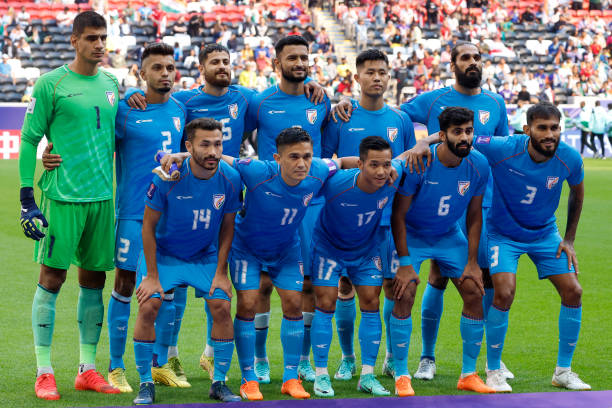
The Rise of ISL Football and Indian Clubs in Asia
The ISL Football scene has come a long way since its inception, and Indian football clubs are increasingly making a mark on the Asian stage. The Indian Super League (ISL) has transformed the football landscape in India, turning the country into a hotbed for talent and competition. Once considered outsiders, Indian clubs are now challenging some of the most storied footballing institutions in Asia. With a mix of strategic investments, international talent, and evolving infrastructure, Indian clubs are now competing fiercely with the best teams in Asia.
In this post, we will explore how Indian clubs are making their presence felt in Asian football, examining the key factors contributing to their success in the continental competitions.
1. Rising Standards of ISL Football
Over the past few years, ISL Football has rapidly evolved, bringing higher standards of play to Indian football. With the introduction of marquee foreign players and experienced coaches, the technical level of the league has improved dramatically. International players like Didier Drogba, Roberto Carlos, and David Villa have graced the ISL Football arena, attracting global attention to the league and setting higher standards for Indian clubs.
These marquee signings have not only elevated the competition within the league but have also raised the level of Indian players, who now have the opportunity to train and play alongside world-class talent. This increase in competition within the league has translated to better performances in international tournaments, such as the AFC Champions League and the AFC Cup, where Indian clubs have started to make deeper runs and challenge the traditional Asian football powerhouses.
2. Improved Coaching and Tactical Development
Another key factor driving the success of Indian clubs in ISL Football is the rise of foreign coaches who bring international expertise to the league. Coaches such as Antonio Lopez Habas, Sergio Lobera, and Kibu Vicuña have transformed Indian clubs by introducing advanced tactical knowledge and modern football philosophies.

Foreign coaches have brought new ideas to ISL Football, focusing on developing a more possession-based, tactical approach to the game. Their influence has helped improve the technical skills and football IQ of Indian players. Moreover, these coaches have helped Indian clubs better prepare for the high intensity of continental competitions, ensuring they can compete with the best teams in Asia.
By enhancing the tactical and physical standards of Indian clubs, these coaches have equipped their teams to be competitive on the continental stage, allowing them to make their mark in AFC competitions.
3. Stronger Domestic Talent Pool
While foreign players and coaches have contributed immensely to the growth of ISL Football, local talent has also been a major factor in the rise of Indian clubs on the continental stage. Indian players are now more technically sound and better prepared to compete with the best in Asia.
The emergence of standout Indian players such as Sandesh Jhingan, Anirudh Thapa, and Sunil Chhetri has provided Indian clubs with solid foundations to build upon. The development of these players has been accelerated by the high-level coaching and competitive environment fostered by the ISL Football ecosystem. As a result, Indian clubs have seen their homegrown talent gain prominence in continental competitions.

This growing pool of talented Indian players has made Indian clubs more competitive in tournaments like the AFC Champions League and AFC Cup. Indian players are increasingly being scouted by top clubs in Asia, further solidifying the country’s position as a growing force in the continent’s football scene.
4. Investment in Infrastructure and Facilities
A major factor contributing to the success of Indian clubs in ISL Football is the significant investment in football infrastructure across the country. New stadiums, training facilities, and improved technology have been pivotal in raising the bar for Indian clubs.
Clubs in the ISL Football are investing in state-of-the-art facilities, ensuring that players have access to the best training environments. These investments have helped Indian clubs raise the standards of their physical fitness, injury prevention, and overall match preparation. Such developments are vital in ensuring that Indian clubs can perform on par with the best teams in Asia.
Furthermore, the establishment of football academies and youth development programs has helped Indian clubs nurture young talent, who will play a crucial role in the future of Indian football.
5. Stronger Fan Base and Commercial Growth
The success of ISL Football is also reflected in the growing commercial appeal of Indian clubs. With a larger and more passionate fan base, clubs in the ISL are attracting more sponsorships, media coverage, and merchandise sales. This commercial growth has provided clubs with the financial muscle to attract better players, coaches, and staff, which in turn has helped improve the level of play in both domestic and continental competitions.
The fan base in India is one of the largest in the world, and the rise in football viewership has encouraged sponsors to invest in the sport. The increased financial backing is allowing clubs to enhance their global competitiveness, and this can be seen in the improved performances of Indian clubs in continental competitions.
6. Competitive International Fixtures and Exposure
Indian clubs now regularly participate in continental competitions, including the prestigious AFC Champions League. These tournaments provide Indian clubs with the opportunity to play against some of the best teams in Asia, which is crucial for their development. The exposure to different playing styles, tactics, and conditions helps Indian clubs improve their game and adapt to the rigors of top-level football.
Clubs like FC Goa, Bengaluru FC, and ATK Mohun Bagan have been able to test their mettle in these international tournaments, and while they may not always emerge victorious, their performances have shown that they are capable of competing at the highest level. By regularly playing in these tournaments, Indian clubs continue to gain valuable experience that is crucial for their development in the Asian football scene.

7. Strategic Partnerships and Alliances
To further enhance their competitive edge, many ISL Football clubs are forming strategic partnerships with top European and Asian clubs. These collaborations provide valuable insights into modern coaching techniques, training methodologies, and tactical approaches.
For example, clubs like Kerala Blasters have established partnerships with prominent European teams, providing access to the latest footballing trends. These alliances are a testament to the growing international recognition of the ISL Football and the ambition of Indian clubs to compete with the best in Asia.
SUGGESTED FOR YOU
Indian Super League: 5 Ways Foreign Coaches and Players Are Transforming Indian Football
Conclusion: The Bright Future of ISL Football
The rise of ISL Football has ushered in a new era for Indian football, with Indian clubs now increasingly competitive on the Asian stage. From strategic investments and foreign expertise to the development of homegrown talent and enhanced infrastructure, the growth of Indian clubs is undeniable.
As the level of competition in ISL Football continues to improve, Indian clubs are well-positioned to become serious contenders in Asian football. With a combination of rising standards, tactical development, and international exposure, Indian clubs are demonstrating that they have what it takes to compete with the best in Asia. The future of ISL Football looks bright, and the rise of Indian clubs on the Asian stage is a testament to the progress Indian football has made in recent years.









